- Behind The Brand
- Posts
- Case Study: LesserEvil
Case Study: LesserEvil
When Popcorn Becomes a Statement: The Brand That Turns Snacking into Self-Expression
Why Was LesserEvil Unique, and What Made Them Stand Out?
LesserEvil’s journey is one of reinvention. Founded in 2005 as a natural kettle corn brand, it struggled in its early years before being purchased in 2011 by Charles Coristine, a former Wall Street professional.
Coristine transformed it by vertically integrating—building their own production facility in Danbury, Connecticut—and repositioning it as a clean-ingredient, mindful snacking brand.
What helps LesserEvil stand out:
Clean, simple ingredients + certifications: Their products are USDA Organic, Non-GMO Project Verified, and they tout grain-free / paleo certifications. These credentials give them credibility in health-conscious circles.
Product innovation across snack types: While popcorn remains the hero, they’ve expanded into puffs, curls, and new flavors. This lets them diversify beyond the popcorn aisle.
Growing scale and visibility: In 2023, they reached about $103 million in revenue, making them one of the top organic snack brands.
By 2025, the brand is hitting ~$165 million and launching their first national marketing campaign.
“Product-as-Marketing” ethos: Their packaging is bold and whimsical, with guru mascots, bright colors, and clear messaging. The packaging itself tells a story—snackers share pictures of the bag and brand on social media, turning each purchase into a mini advertisement.
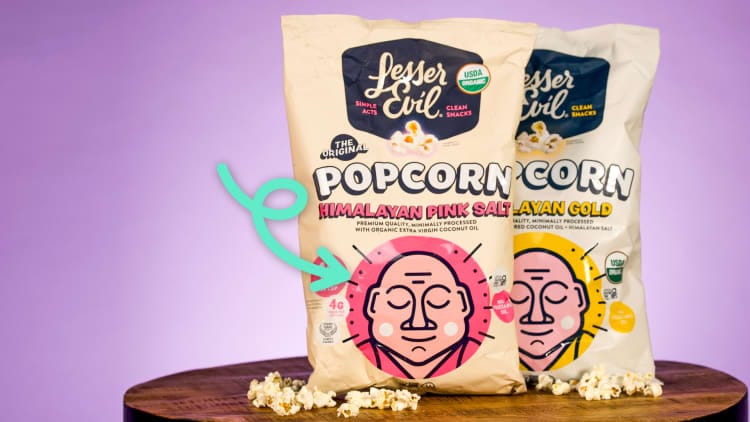
Their Detailed Marketing Strategy
First national campaign: “Feed the Feeling” + OOH / sampling tours
LesserEvil launched its first national campaign to raise brand awareness beyond natural channels. Called “Feed the Feeling,” it includes sampling via a branded bus tour, out-of-home ads, and messaging encouraging people to upgrade their snack routines.
Their marketing spend jumped ~55% in 2023 to fund this shift.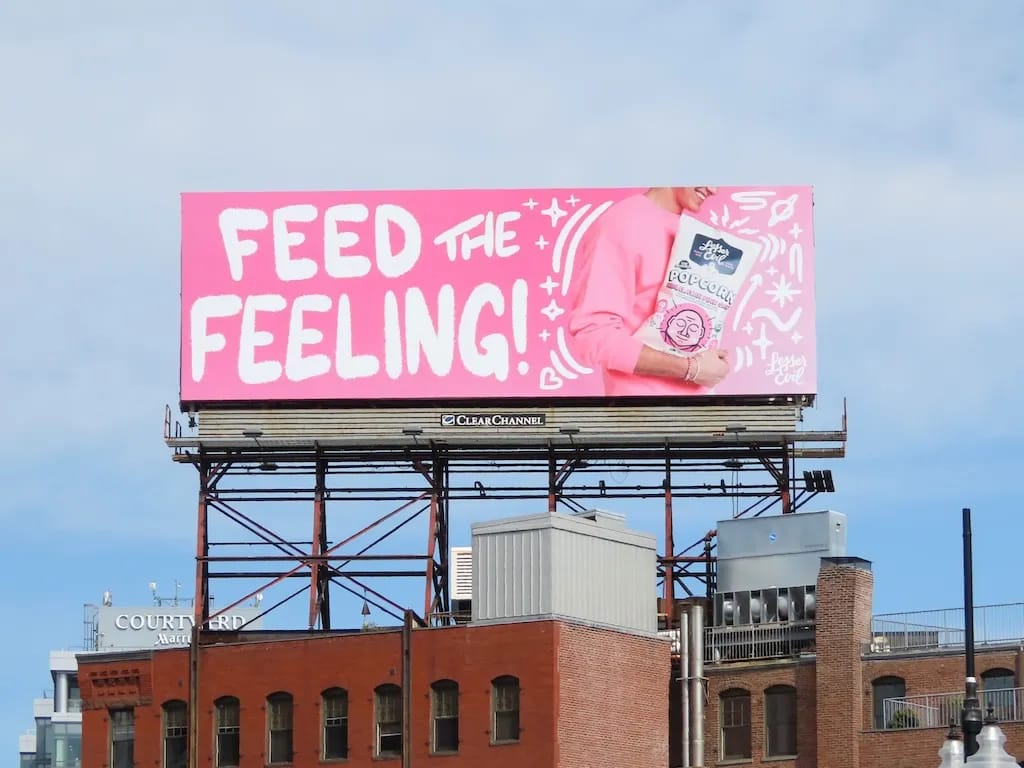
“Renovate Your Pantry” campaign
A campaign theme urging consumers to rethink their everyday snack choices. The messaging: “taste good, feel good, do good.” It positions LesserEvil as both more tasty and more mindful.Out-of-home and themed presence
They have embraced OOH (out-of-home ads) to build presence in urban settings. In interviews, the marketing team describes this channel as part of their “Power of Presence” strategy.Brand refresh and identity unification
In 2019, LesserEvil rebranded with a clearer visual identity: bold colors, guru mascot icons, simplified logos, and packaging that feels modern. The refresh made the brand more cohesive and scalable across future snack lines.Product portfolio extension & co-branding
They’ve branched into popcorn, snack puffs, and kids’ snacks, using the same brand ethos. Acquiring R.E.D.D. Bar added functional snack dimension.
They’ve also used co-branding (e.g. helping evolve Buddha Bowl brand into their architecture) to extend reach.Packaging as marketing + visual standout
Their packaging is bright, with bold flavor names (Himalayan Pink, Gold), and icons like guru characters. This visual boldness helps the product stand out in crowded snack aisles. Their packaging is also agile: they use short-run scalable printing to test visuals quickly.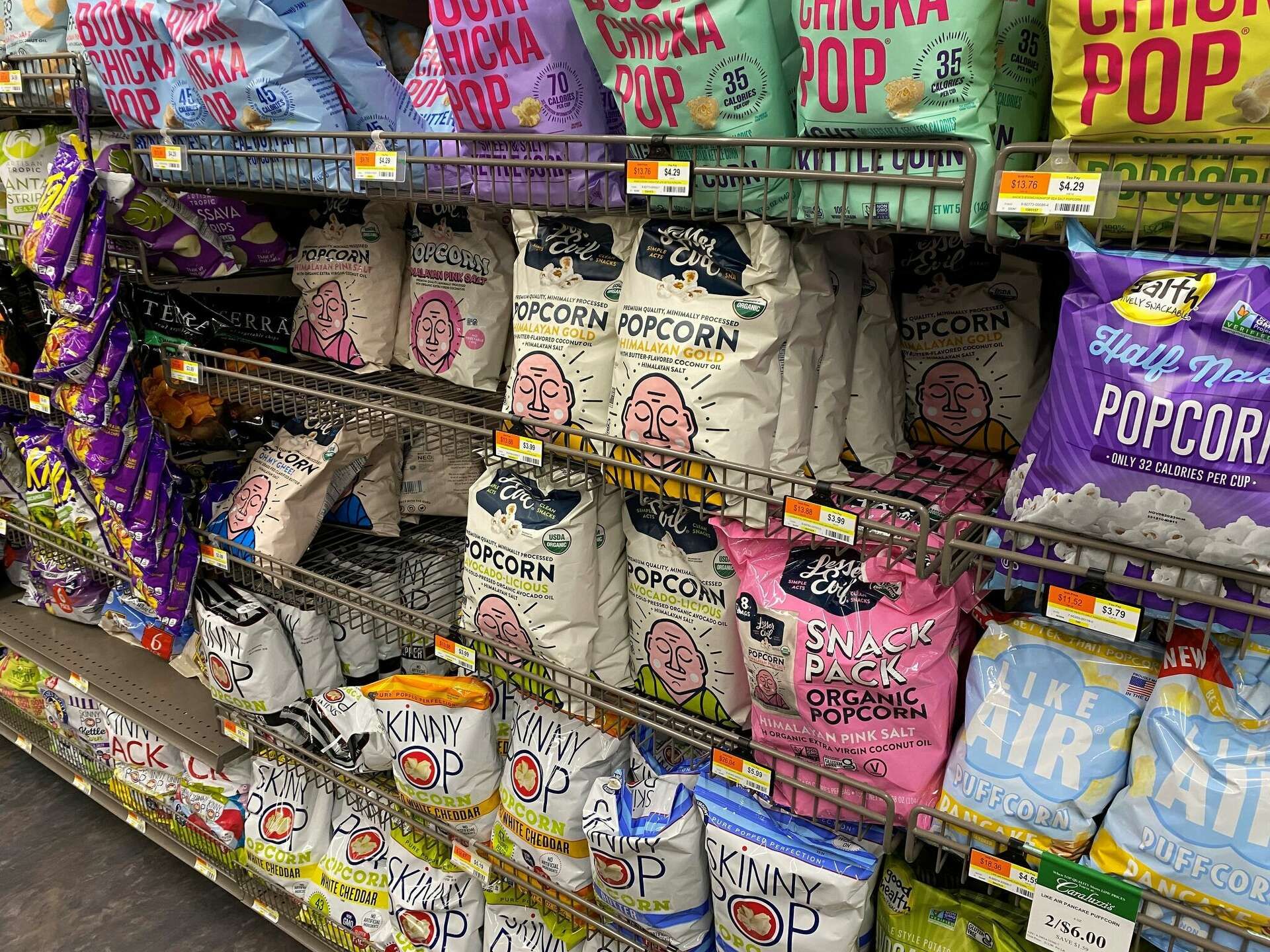
Trust signals & certification
The brand leans heavily on third-party certifications—USDA Organic, Non-GMO, Kosher, Paleo, etc.—as trust proofs.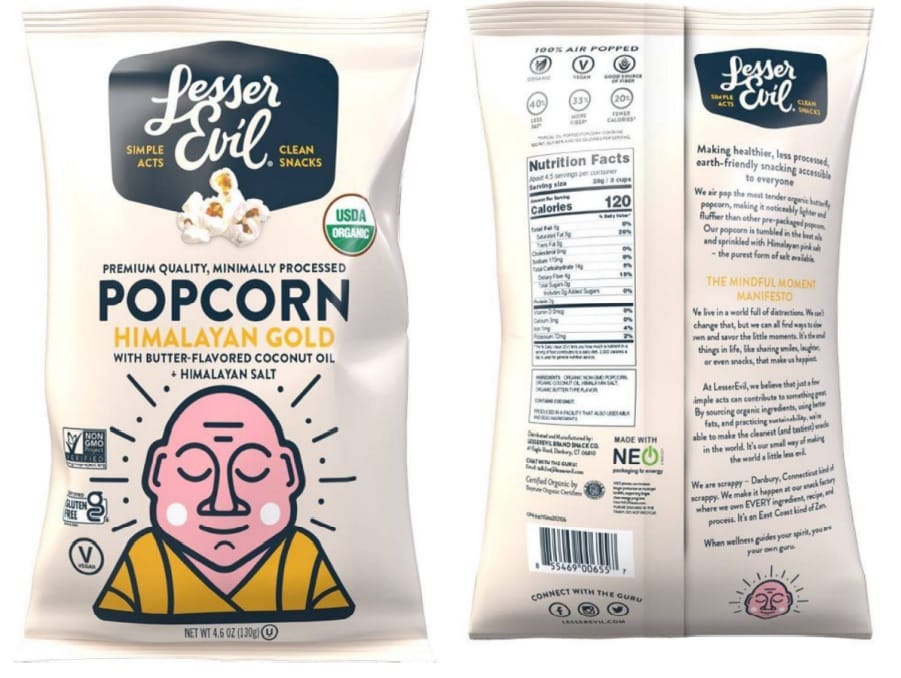
How Other Business Owners Can Use / Implement This Strategy
Design packaging that acts as marketing
Invest in packaging that tells your brand story. Bold visuals and mascots turn each bag into a social media moment. LesserEvil’s bags are shared as content.Start with authenticity, then scale
Build strong brand identity, vet products, and start in niche or natural channels before expanding broadly with campaigns.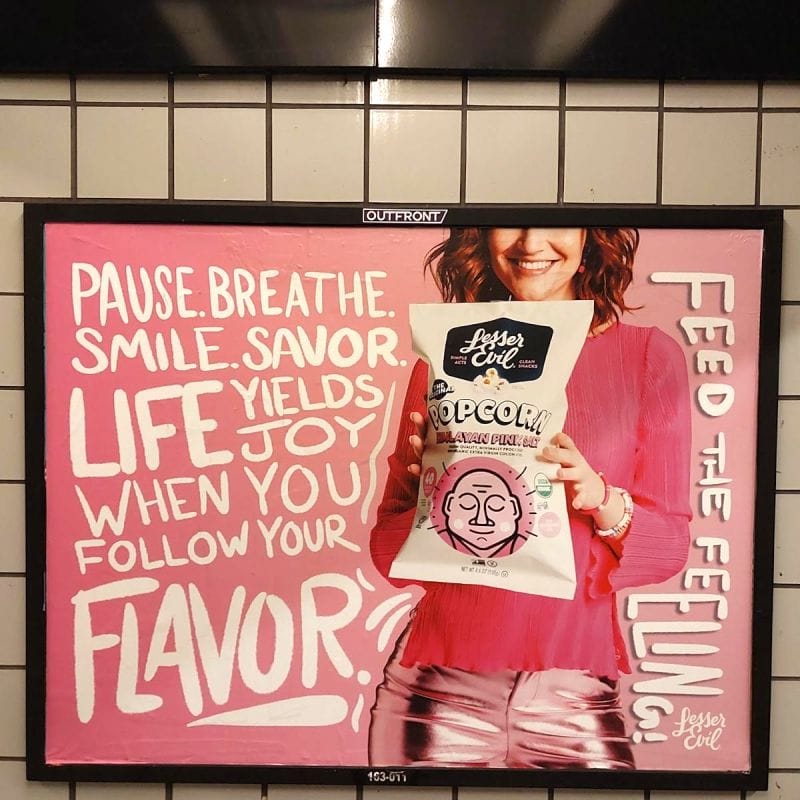
Phase marketing investments
Use growth and margin improvements to gradually scale marketing spend—don’t overspend too early. LesserEvil increased marketing by 55% only when revenue allowed.Use messaging to shift habits
Campaigns like “Renovate Your Pantry” tie product to lifestyle change, not just impulse purchase.Leverage certifications with caution
Certifications can differentiate, but health claims must be supported carefully to avoid litigation.Balance retail and brand control
Expand retail channels but keep control over brand identity (design, messaging) so your product still pops off shelves.Use OOH to build presence when scaling
When you have core brand strength, adding physical ads helps signal legitimacy to broader audiences.Pivot thoughtfully into adjacencies
After securing a strong position in popcorn, LesserEvil expanded into puffs, curls, and new snack formats—allowing them to follow demand without diluting identity.
Takeaways
Product = Advertisement: With packaging designed to attract attention and share, LesserEvil treats every snack purchase as an opportunity for exposure.
Measured growth wins: They didn’t overpromise; they expanded marketing and retail in tandem with capacity and brand strength.
Design matters deeply: Mascots, illustration, palette—these visual elements distinguish in commodity categories.
Certifications carry weight—but risk: They boost trust but require care in claims.
Retail + branding synergies: Expanding into Walmart, Target, Costco only amplifies brand identity if the brand stands out.
Story drives growth: The narrative of clean snacking, “lesser evil,” simple ingredients resonates.